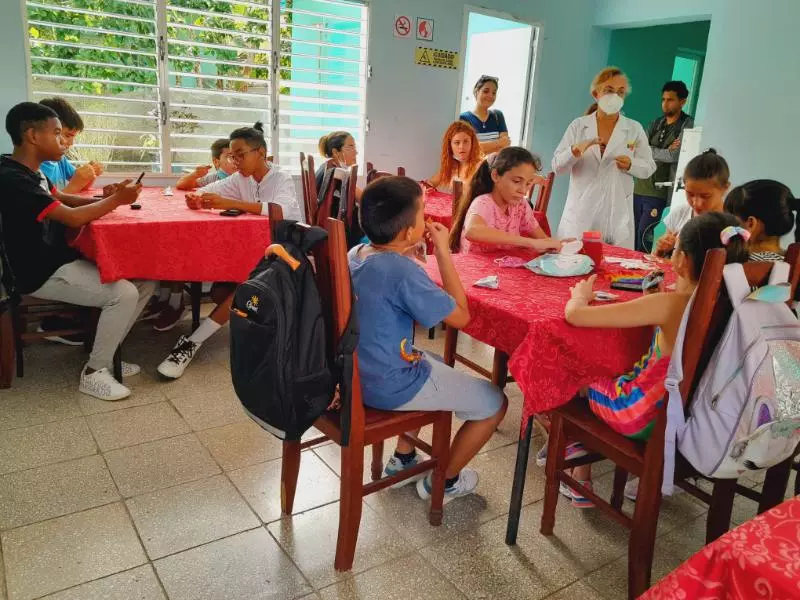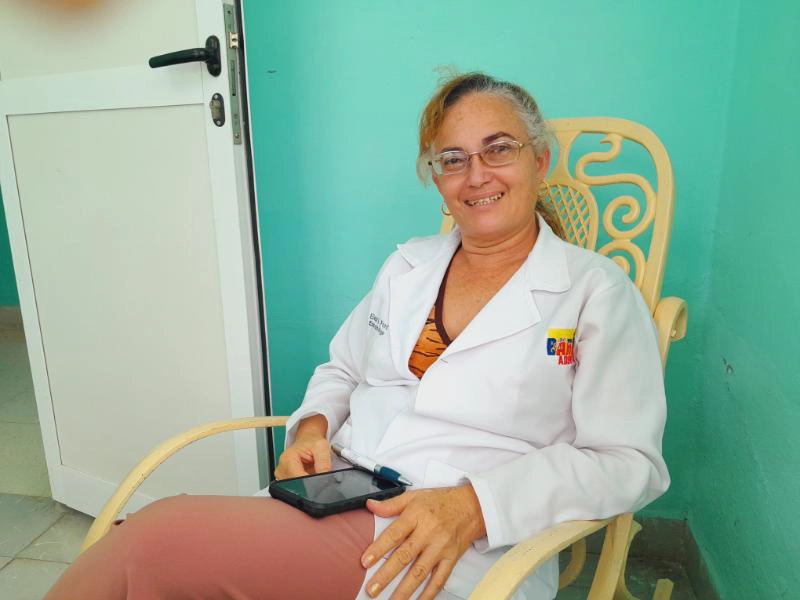For Dr. Elena Gertrudis Rodríguez Font, a first-degree specialist in Endocrinology and Comprehensive General Medicine. A second-degree specialist in Pediatrics, and head of the Endocrinology Department at the Octavio de la Concepción de la Pedraja Children’s Hospital.
Working with children diagnosed with diabetes is part of her daily work. Which she undertakes with extreme sensitivity and empathy. Hence, she issues a timely warning to families with children in the province, given the increase in cases in recent years.
Devoting a large part of her life and experience to caring for these children has allowed her to identify some core issues that can contribute to reducing the incidence of this condition, where the pancreas does not produce enough insulin, causing high blood glucose levels.
How does diabetes mellitus affect children in the province of Holguin?
-“There is an increase in diabetes mellitus worldwide, in Cuba and in Holguin, we can say. This could be related to many factors because not only is type 1 diabetes mellitus more prevalent in children. But type 2 diabetes is also emerging, which is more common in adults, and in children, it appears in those with exogenous obesity.”
“From there, we could say that this increase could be due to poor nutritional habits. The increase in sweets, and junk foods that can actually be harmful and promote obesity.”
“We also cannot fail to mention the immunological aspect, especially with viral diseases, from COVID-19 to dengue fever. All immunological diseases that appear in the family of hypothyroidism, vitiligo, and lupus, which predispose children to another immunological disease. In this case, thyroid disease and diabetes mellitus stand out, the latter being the most prevalent.”
“Many times, a child may have type 1 diabetes mellitus at onset and not have any close relatives with diabetes. However, when we investigate, a very close relative may be found with hypothyroidism, vitiligo, or lupus. This immunological component is a predisposing factor for the development of type 1 diabetes mellitus. Genetic alterations in chromosome six, a shortening of the arm of that chromosome, have even been described, which can lead to a child having an innate predisposition to developing the condition. Other associated environmental or genetic factors, whether from their father or mother, can contribute to the disease.”
“There is actually an increase in our province, and there are more than 200 children with type 1 diabetes in pediatric age. Those cases that have already turned 19 and entered adulthood are not taken into account. However, they will be type 1 diabetics their entire lives. So, this really is a significant number of type 1 diabetic patients to consider.”
What data supports this increase?
-“Our description and database dating back to 1986 show that two or three patients appeared. There are even years that stand out for their high incidence. For example, in 2015, more than 25 patients appeared. After COVID-19, we also saw an increase in the onset of diabetes. So, almost every year, more than 15 patients appear, and there are some with more than 20 patients who have had onset of diabetes mellitus.”
Where is the age range with the highest incidence located?
-“So far, ages five to 11 predominate, although adolescents are not far behind. As the number of patients between 12 and 14 years old has increased. This last year, we have seen an increase in patients between five and nine years old, and in adolescents up to 13 years old.”

What is the care and management of these children with diabetes?
“It’s truly a very complex task, as a team and with the family. We start there. From the moment the child makes his or her debut, that work begins in the therapy rooms. As they almost always present with an emergency, in intensive care, with diabetic ketocidosis. From there, we begin to explain to families who are in shock that they should view diabetes as a condition, not a disease, because we are going to try to allow that child to live with quality of life but with healthy eating and lifestyle choices.”
“Diabetic education begins from the child’s debut because many parents think they’re on a strict diet. When in fact, it’s a healthy diet that restricts sweet and fried foods and requires six meals a day. Then we explain to them how to take control in the event of high or low blood sugar. Where to inject themselves, and how to use Novopen.”
“Since 2019, we’ve had this device for all Cuban diabetic children, donated by NOVONORDISK, and it’s provided free of charge. The carpule insulin injection kit is available at a pharmacy at a low price. It’s a very beneficial device because it’s painless, the needle is minimal, it doesn’t require refrigeration, and they can inject in any circumstance or location, allowing for the exact dose. So, it has many advantages. We just need to teach them how to use it correctly and learn the key sites where the injection is most effective.”
“We insist that they can exercise. When they’re kids, they can complete the first part of physical education, and if they’re young, they can attend a gym with no more than an hour of exercise, because this gives them better metabolic control. They’re also followed by the Endocrinology service every three months, and once a year, they’re admitted for their annual checkup. This gives us insight into their metabolic control, their adherence to treatment, and their quality of life.”
“What are the most common complications of diabetes in children?
“Among the most common are the effects on target organs, which can be damaged when there is poor metabolic control. This can include vision, diabetic retinopathy, and damage to the autonomic nervous system due to sweating without hypoglycemia. The kidneys, one of the vital organs, are also affected, which is why we prescribe enalapril as a renoprotective drug for patients with more than 20 years of disease progression, and continue to monitor for microalbuminuria. These are the complications we want to avoid. Also which is why we monitor and monitor their health to identify complications as quickly as possible.”
“I am satisfied with the work done because I currently don’t have any blind children with diabetes or vascular lesions. We can’t talk about harm in pediatric patients, despite their disease having been present for more than a decade. That’s why we talk more about monitoring than complications. We’re interested in keeping them well-controlled. It’s always better to talk to them about good metabolic control than about what will happen to them.”
What is the quality of life like for children with diabetes in Holguin?
– “In studies conducted on quality of life, using internationally validated questionnaires, our patients have had a very good quality of life so far. This satisfies us and we work to ensure it continues this way.”
“Follow-up consultations take place every day at gate two in the outpatient clinic of the pediatric hospital, where we decided to classify the days by glandular tissue, as our service is regional and serves patients from the eastern provinces.
On Mondays, we see patients with obesity and diabetes. On Tuesdays, we see thyroid conditions, the day with the highest number of patients coming to the consultation. On Wednesdays, we see patients with gonadal and pituitary gland disorders. And Thursday is the day for new cases, when patients referred from their health area arrive and the endocrinologist performs their first consultation. Finally, Friday is the day we dedicate to nutrition, both excess and deficiency.”
In Cuba, as in other countries, children with diabetes receive specialized medical care for their disease management. There are educational and support programs to help them learn about diabetes and how to manage it properly.
- International Scientific Conference on Neurogenetics - 11 de December de 2025
- 60 years in service to life: A tribute to the Lenin Hospital - 10 de December de 2025
- Renowned UK Scientists to Visit Holguin - 8 de December de 2025

